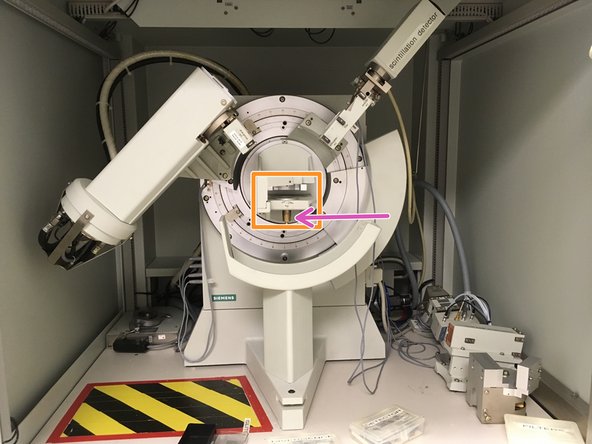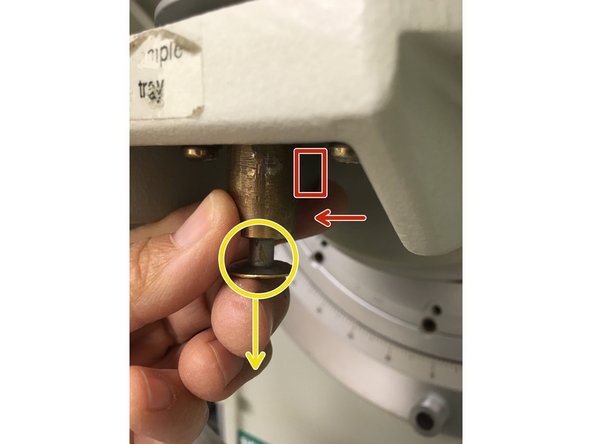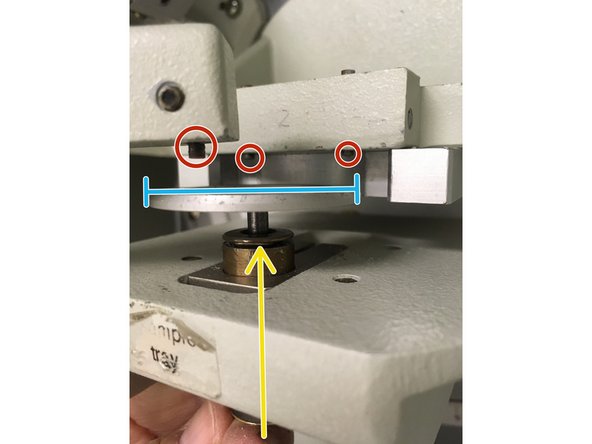-
-
XRD analysis relies on diffracting x-rays from randomly-oriented crystals.
-
For results that best match scans in the Powder Diffraction File, use a power form of the material that you want to analyze.
-
A detailed set of instructions for preparing power specimens can be found at this site.
-
-
-
The top surface of the power will need to be flush with the top surface of the specimen holder.
-
A glass slide can be used to create a flat surface.
-
Beware that the glass slide can introduce a preferred crystal orientation if the power particles are not equiaxed.
-
This will show up as unexpected intensity ratios of the peaks (some peaks may be larger or smaller than expected).
-
-
-
Locate the specimen stage at the center of the XRD goniometer.
-
Locate the brass stage lock that is directly beneath the specimen stage.
-
-
-
Pull stage release toward you
-
With release engaged, drop stage plunger to lower specimen stage.
-
The stage for the specimen is an aluminum disk.
-
The stage sits on a ball joint that will rotate without warning.
-
-
-
Set specimen on stage.
-
With stage release engaged, raise the specimen stage by pressing the plunger upward.
-
Ensure that the specimen top surface is contacted by the three planar positioning pins.
-
Disengage the stage release.
-
You are ready to take analyze the specimen. Go to Standard Operating procedures.
-
Cancel: I did not complete this guide.
3 other people completed this guide.







